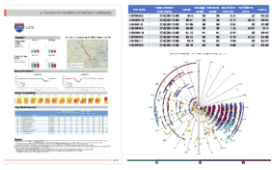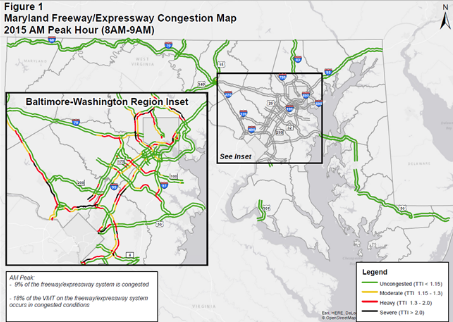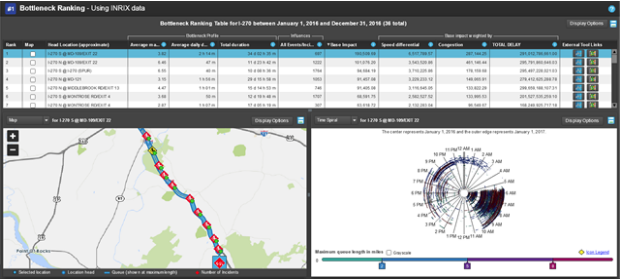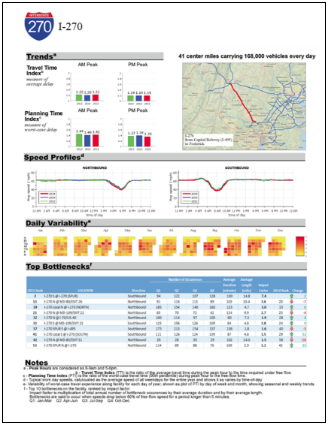Use Case:
Measure Corridor Performance
Measuring corridor performance helps agencies focus on policies, projects and programs that are performance-based, to systematically address recurring and non-recurring congestion.
Measuring corridor performance helps agencies focus on policies, projects and programs that are performance-based, to systematically address recurring and non-recurring congestion.
Many transportation agencies have adopted Asset Management Plans to provide the strategic framework, context and guidance for infrastructure asset management and capital program decision-making.
Thus, having the ability to consistently and accurately assess system performance is critical; from understanding current system inefficiencies, to demonstrating project and program effectiveness over time.

The Maryland Department of Transportation’s State Highway Administration (MDOT/SHA) focuses on performance-based policies and projects that address recurring and non-recurring congestion. But the agency needed the ability to regularly monitor the system and help drive investment-related decisions.
Since 2012, the MDOT/SHA has published annual State Highway Mobility Reports which summarize the state’s performance measurement efforts.
These reports were conceived to describe the calendar year performance as it relates to mobility trends in Maryland and how the SHA is focusing to address various mobility challenges through strategies such as Transportation Systems Management and Operations (TSM&O) and multi-modalism, as well as through a number of capital projects the SHA has accomplished in the past year.



MDOT realized these benefits in using RITIS/PDA Suite tools for their State Highway Mobility Report: